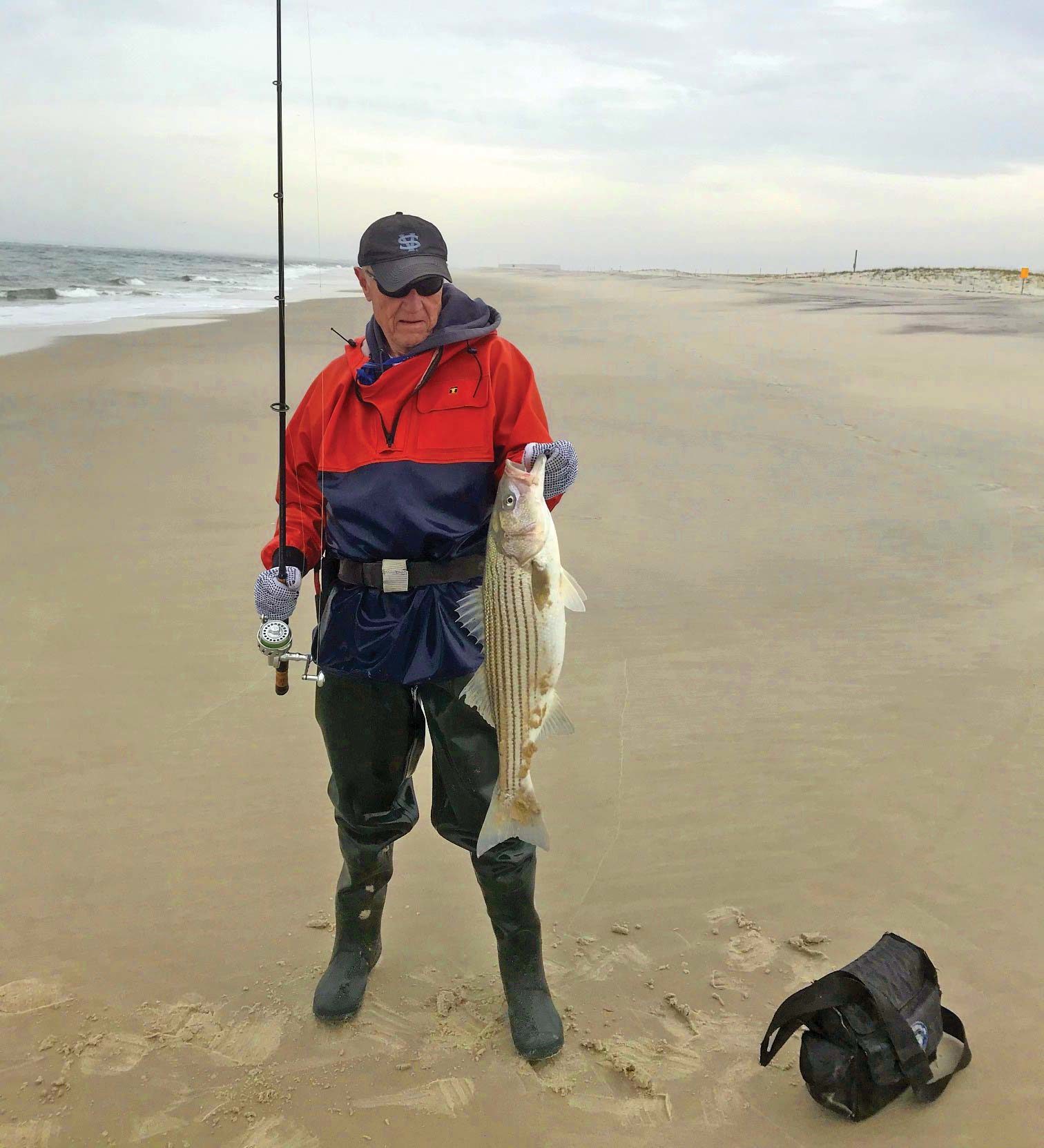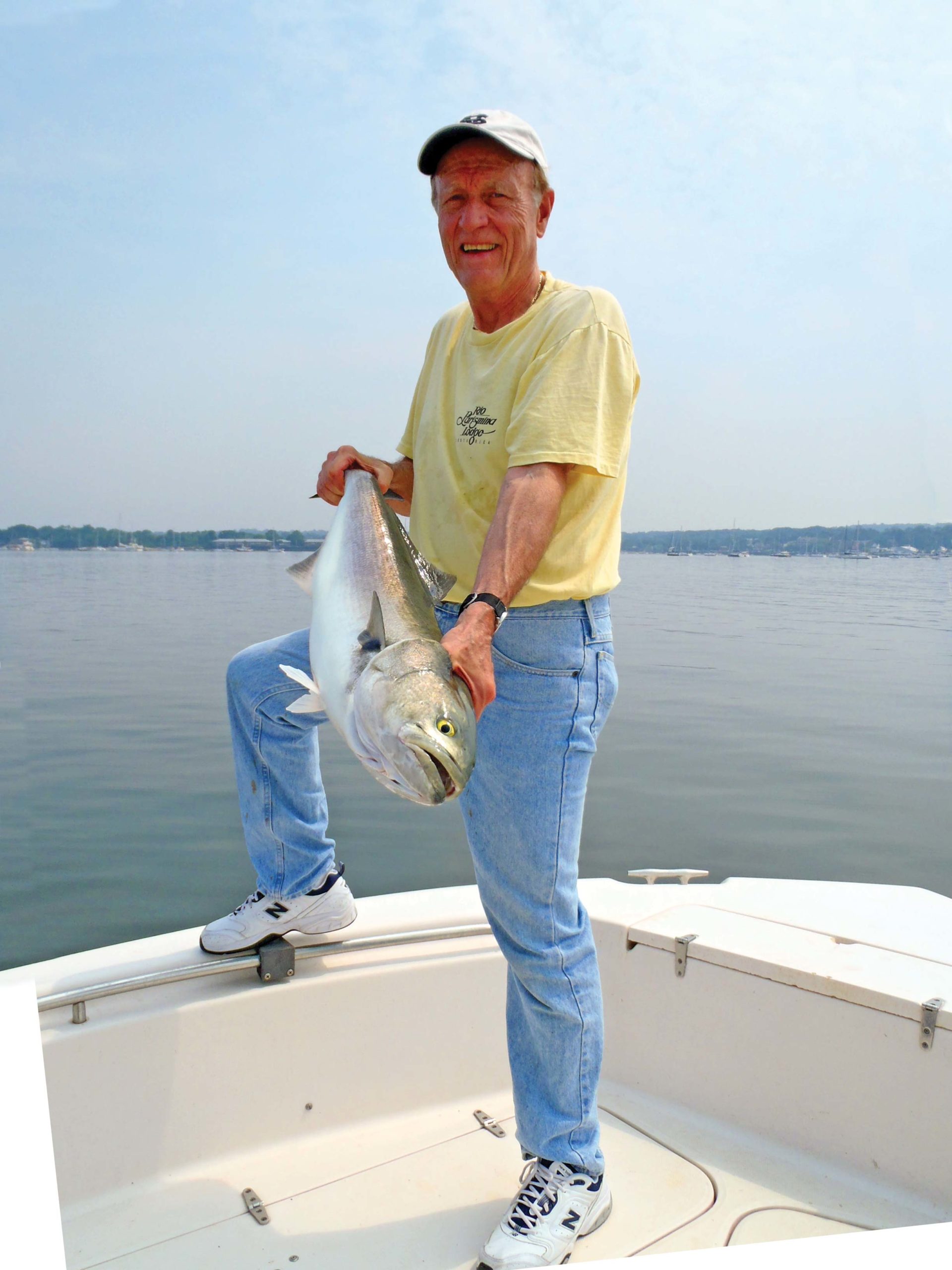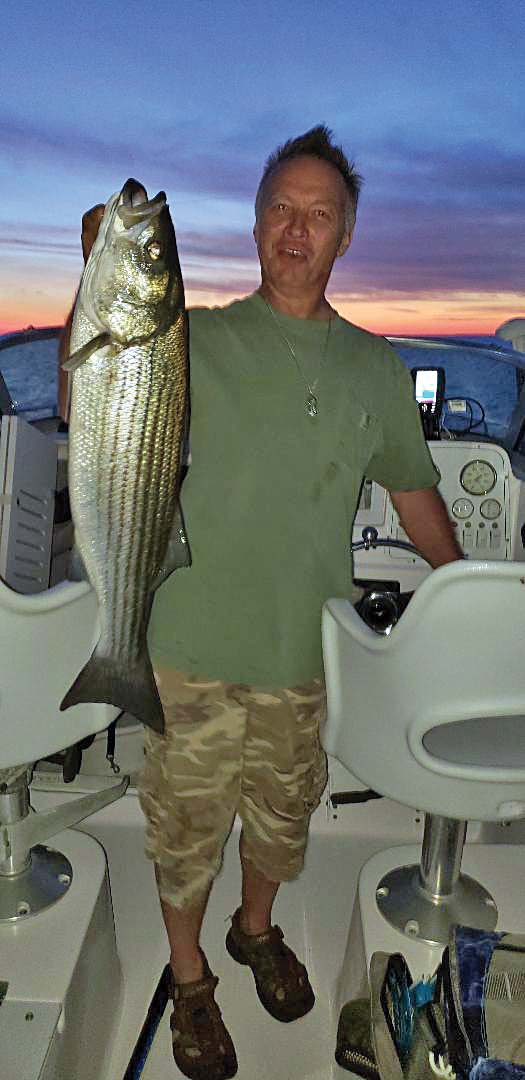
Is feeding competition in play, and if so, how does it work?
We’ve all experienced the effect of feeding competition or a lack of it. Have you noticed it? Have you attributed it to good and bad fishing? Well, anyone who has spent a significant time fishing knows there are good days and bad days. True, some good and bad outings can be attributed to bait, storms, wrong tides, and a decline in fish stocks, and it’s usually pretty easy to figure these factors out as cause and effect. However, what about the days when environmental conditions are neutral, there is some bait around, and a decent number of fish, too? Is competition in play, and if so, how does it work?
Hypothetical
Here’s an entirely made-up scenario so that we can understand how fishing competition alone can affect fishing success. Let’s say you and two others are fishing in an area covering about one acre—either from shore or a boat. Further, let’s say there are one hundred stripers in the area and one thousand peanut bunker. Now, let’s look at two possible outcomes with the above parameters.
In the first case, the bait is scattered in pods and moving to avoid predators. In the second case, all the peanuts are bunched together in one school, and the stripers are pushing against the edges of the school. How might our fishing experiences differ? In the first case, it is entirely possible that the stripers have spread out into small pods of three to five and are roaming— perhaps several feet apart, looking for pods of peanuts. This isn’t a result of intellectual thinking, rather an instinct that allows them to cover more territory. Now, three anglers cast lures (bucktail, tin, popper, pencil popper, or soft plastic) in different directions into the acre of water and retrieve. One angler gets a hit and misses, another has a fish on briefly, and the third doesn’t get a hit. Before we analyze this, let’s move on to the second case. In the second case, the same three anglers make the same casts, one angler catches a fish, the second one gets a substantial hit, and the third doesn’t get a hit. In addition, let’s add that the bait was not spraying in both cases, and fish are not jumping or swirling, nor were birds hovering or diving in the area.
Analysis
In the first case featuring scattered bait and fish, each angler has approximately the same chance of presenting the lure in proximity to a fish. So, an angler may cast in any direction and have a good chance that a striper will see the lure. In the second case, where both bait and fish are crunched into a small portion of water, only an angler who casts into or very near the school of fish has a good chance for a hookup. So then, why are the results in both cases so similar?
The results are similar only because of limited bait and predators. On the other hand, if the acre of water held 500 stripers and 5000 peanut bunker, the results would likely be different. In the latter case, there would probably be three or four large schools of bunched peanuts and similarly three or four large schools of bunched-up stripers feeding. All the anglers would likely hook a fish because feeding competition would be intense.

How Competition Works
As we have seen, when bait is scattered, so are the predators. When several feet separate predators, they lack the urgency to attack. They are more deliberate, get a longer look at the lures, and often notice an irregularity and shy off. This may result in no hit or a tail slap as the striper turns away.
On the other hand, when a lot of bait is compressed into a ball, and the predators are bunched together to facilitate an attack, the stripers have much less time reacting to a lure. If the attacker hesitates, another nearby striper will opt to attack in this scenario. In the end, they don’t get a long look at the lure and must react out of instinct and without examination, or they will lose the meal. This is feeding competition. Tightly bunched prey and predators also compress reaction time.
Feeding competition is any angler’s best friend because it also reduces the wariness of the predator. This is why blitzes are so much fun. Loads of bait and gamefish equates to chaos, where all fish try to beat the other fish to the prey. Examination of the prey doesn’t just decrease. It is eliminated.
An angler makes a cast, gets a fish on, drops the fish, and then a fish is on again. If I had a dollar for each time I heard an angler say, “He came back,” I’d be rich. However, the reality is the original fish doesn’t usually come back. Instead, one of the other fish feeds only inches away that grabs the lure when the first fish is dropped. How often has that happened to you on outings when you might describe the fishing as “a slow pick?” Sure, once in a blue moon, but rarely because the fish are spread out in a slow pick.
Of course, there are all degrees between intense competition and almost none. It takes little skill to catch fish in a blitz, but typically only experienced anglers can coax a single cruising fish to strike. There’s an old descriptor of an outstanding angler that goes like this: “Great anglers catch fish when there are no fish.” Obviously, at least one fish has to be present to coax a strike. The point is, an excellent angler is capable of making precise and enticing presentations that often trigger a strike from a single cruising fish, even in the absence of competition.
Most often, competition is moderate—not intense and not non-existent. It’s on these occasions that a beginning angler can learn a lot. The key is to take the time to try and analyze the situation, stay focused, and methodically test the value of different lures and retrieves. It helps if an angler is never satisfied with the results and wonders how many more fish they might catch if they were to modify their approach. Each successful modification becomes a learning moment.
Setting my sights high has been one of my mantras for decades, and it has paid off big time. Relentlessly seeking more fish doesn’t mean you aren’t having fun but does indicate growth as an angler. Some anglers might view this as work, but most consistently successful anglers consider it fun. They often become lost in the hunt, vigorously challenge their skill level, and perfect their craft. These are, in my opinion, good qualities to have as a fisherman.

Think Like A Fish
Why and how do predator fish end up where the bait is located? There is no single simple answer. Yes, predators can sense bait from a distance with their lateral lines that pick up both vibrations and odors. Yes, they can wander around and get lucky. But more often, they tend to move swiftly from one place to another and are attracted by instinct to structure edges, current edges, and depth changes. In other words, there is an unconscious method to their behavior that seems like randomness to us. You may not believe what I’m about to write, but it’s true. I’ve often caught a lone fish, then nothing for five or ten minutes only to get into a hot bite. I believe through these experiences that there are times when a searching school spreads out into what might be called “scout” formation. That is, they are far apart from each other. If one of the “scout” fish finds bait, it leaves, returns to the school, and somehow guides the school back to the bait. Heck, if bees head other bees back to pollen sites, why not stripers to bait?
Then there’s the story told to me about Al Reinfelder. Al and a friend invented the Alou Eel a long time ago. Al was an excellent angler who would take his rod and start trashing the water with it when fishing on a still night without success. He said the noise attracted predators like stripers from a distance. When I first heard this, I did not believe it. Then one night, standing in the surf and desperate after hours without a fish, I remembered the story and began beating the water with my rod. Within minutes I was into a flurry. Coincidence? Maybe, but consider I’ve used that trick successfully perhaps a dozen times.
The moral of the story is that if you train yourself to think like a fish, you’ll understand fish behavior. Once armed with that information, you can apply it to your fishing and increase success. I have many approaches I use when fishing with lures, so I am rarely robotic or married to one or two lures with a single retrieve. I know that fish are very competitive in some situations and non-competitive in others. However, they can be caught even when they are spread out and neutral or negative.
In 2013 I was fishing with about 15 other anglers. At first, we all picked a fish here and there. Then, I made myself think like a fish. I stopped fishing, stepped up the beach, looked at the water for wave action and the presence of bait. The waves were about three to four feet, but there was no evidence of bait—no birds, no splashes, no dark patches in the water. Therefore, I reasoned that the fish were spread out and non-competitive.
Further, I reasoned that what fish were present were working the lip of the beach slope where waves ran down the slope into deeper water, creating turbulence. The turbulence at the lip lifted lots of little critters out of the sand into the water column. I put on a 3/4-ounce white bucktail and pork rind. I made shorter casts, adjusted my retrieve speed so that when I entered the turbulence at the lip, I let the lure fall. I began hooking up on almost every cast. In this case, I adjusted to a lack of competition with a group of actively feeding stripers in a long narrow zone along the lip. My point is, there are lots of ways to adjust to intense competition or a lack of it.



